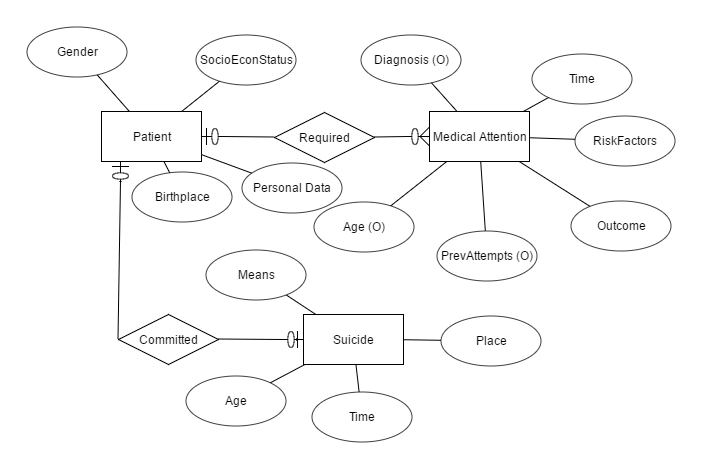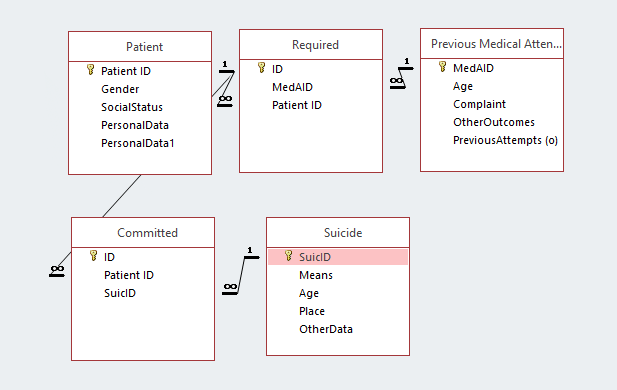As a part of its activities, the US Department of Health and Human Services Office of Disease Prevention and Health Promotion (2010) has been developing the “Healthy People” objectives for the US. The project presupposes setting a deadline (for example, the year 2020) and value for a number of health indicators that should be achieved by that deadline. “Healthy People” is comprehensive as it is aimed at the improvement of the health of the population at large.
I have chosen the MHMD-2 indicator that is titled “Reduce suicide attempts by adolescents.” In 2013, 2.7% of students in the grades 9-12 made suicide attempts that “required medical attention” (Office of Disease Prevention and Health Promotion, 2016). For the year 2020, the Office of Disease Prevention and Health Promotion (2010) has set 1.7% as the target for this particular group of students.
In order to assist healthcare policy-makers and providers in this area, a database can be offered. It is supposed to include the data that can aid in both tracking and understanding the problem of adolescents’ suicide. The suggested database entity relationship model is presented in Figure 1. It shows the key entities (patients, medical attention, and suicide) and also demonstrates the differences between their relationships. For example, requiring medical attention is optional, and there can be multiple cases of it. Suicide is also an optional entity for this model, but a patient can commit only one suicide; attempts at suicide are placed in the “medical attention” entity.
Also, the model of the database that can be created with the help of MS Access and Alexander and Kusleika (2016) book is shown in Figure 2. Please note that some of the attributes are not unlikely to be changed, and both models include suggestions rather than instructions. They are also not identical, and the Access model includes some “blank” rows that can be customized.


The database is meant to be national and include only adolescents since the suggested issue is the suicide in this particular population. The data can come from a variety of sources, including National Electronic Injury Surveillance System-All Injury Program, National Hospital Ambulatory Medical Care SurveyNational Hospital Ambulatory Medical Care Survey, National Inpatient Sample, National Violent Death Reporting System, National Vital Statistics System, Web-based Injury Statistics Query and Reporting System, and Youth Risk Behavior Surveillance System (Centers for Disease Control and Prevention, n.d.). Also, some non-national sources like the WHO Statistical Information System can be of use.
From the figures, it is seen that the scope of the database involves lethal suicide cases (which is a more easily quantifiable and relatively easily tracked) as well as the cases of attempted suicide, which, unfortunately, will only be able to represent the situations that required medical help. The suggested database provides the data for the analysis of the national performance with respect to the indicator and can demonstrate the contributing factors and risks, which should be addressed to prevent suicides in adolescents.
The primary end user is the agencies and bodies that are involved in Healthy People 2020 and, possibly, similar initiatives. Also, with all the considerations about information security and privacy considered, the database can be used by researchers for the sake of producing public reports. Given the nature of information, it is relatively unlikely that it can be made public, but its modified and cut version might be made available if it is deemed possible and useful.
References
Alexander, M. & Kusleika, D. (2016). Access 2016 Bible. New York, NY: John Wiley & Sons.
Centers for Disease Control and Prevention. (n.d.). Suicide: Data Sourcesa. Web.
Office of Disease Prevention and Health Promotion. (2010). Healthy People 2020. Web.
Office of Disease Prevention and Health Promotion. (2016). Mental Health And Mental Disorders. Web.
